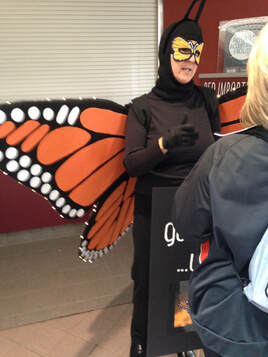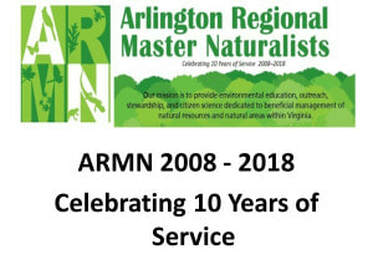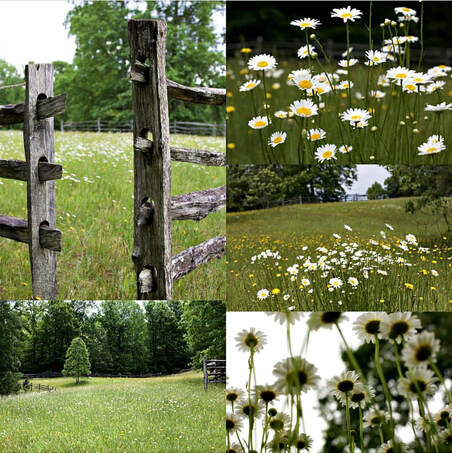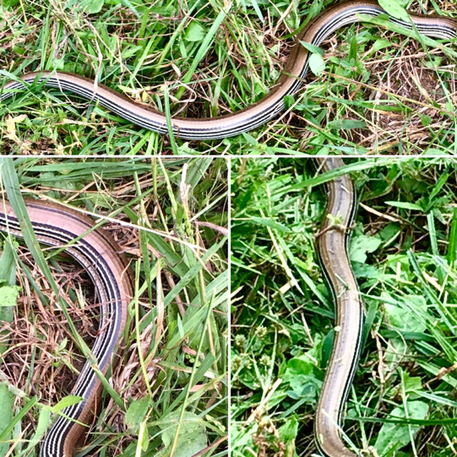Recognizing Milestone Achievements by VMN Volunteers
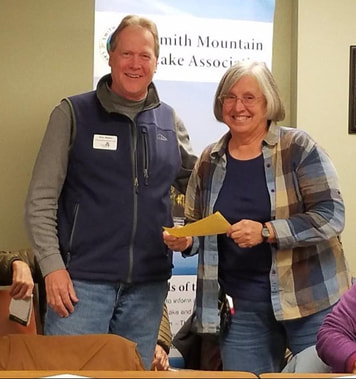 Virginia Master Naturalist volunteer Connie Hylton (right) received her 1,000 service hour pin from Rick Watson (left) Blue Ridge Foothills and Lakes Chapter President, in November 2018. Photo by VMN-BRFAL Chapter.
Virginia Master Naturalist volunteer Connie Hylton (right) received her 1,000 service hour pin from Rick Watson (left) Blue Ridge Foothills and Lakes Chapter President, in November 2018. Photo by VMN-BRFAL Chapter.
Below, we have listed the volunteers who have achieved these milestones between August 2018 and January 2019 (based on reports received by our chapters as of January 31.) Some of these volunteers have demonstrated long-term dedication through many years with the program. Others have joined the program more recently, but they have done extraordinary levels of service in a short time frame. We are honored to have all of them sharing their time and talents as Virginia Master Naturalist volunteers, and we are pleased to recognize their efforts in this newsletter and with special milestone pins. Their names are listed alphabetically within each chapter.
In addition, although we cannot list them all here, we are thrilled to recognize the 1,400 Virginia Master Naturalist volunteers who certified or re-certified for 2019, meaning they completed 40 hours of volunteer service and 8 hours of continuing education. Congratulations, everyone!
Thank you to Tiffany Brown, VMN project assistant, for compiling these lists!
|
5,000 hours
Robert Toner, Eastern Shore Les Lawrence, Historic Rivers 2,500 hours 1,000 hours 500 hours |
250 hours
Susan Berry, Arlington Regional Penny Firth, Arlington Regional Paul Gibson, Arlington Regional Diane Goebes, Arlington Regional Louis Harrell, Arlington Regional Alissa Ford Morel, Arlington Regional Anne Owen, Banshee Reeks Susan Sims, Banshee Reeks Carol Sottili, Banshee Reeks Chris Russo, Banshee Reeks Mary Ames, Central Piedmont Waren Rofe, Central Piedmont Denisa Regeimbal, Central Rappahannock Cindy Sexton, Central Rappahannock Imogene Treble, Central Rappahannock < span>Lisa Gurney, Eastern Shore Spencer Gurney, Eastern Shore Greg Shupe, Eastern Shore Peg Volk, Eastern Shore Susan Bartram, Fairfax Shawn Dilles, Fairfax Joe Gorney, Fairfax Angela Granieri, Fairfax Jeanne Kadet, Fairfax Sherry McDonald, Fairfax Pete Mecca, Fairfax Debbie Walch, Fairfax Beverly Rivera, Fairfax Kathy Byers, Headwaters Betty Forrest, Headwaters Chris Allgyer, High Knob Paxton Allgyer, High Knob Graham Rose, Historic Rivers Robert Thomas, Historic Rivers Rose Ryan, Historic Rivers Amanda Baxter, Holston Rivers James Lefler, Holston Rivers Melanie Smith, Holston Rivers Doug Smith, Holston Rivers Paula Spevak, James River Dale Alling, Merrimac Farm Rosemarie Nielsen, Merrimac Farm Hurricane Thompson, Middle Peninsula Carl Absher, New River Valley Barbara Flaser, New River Valley Suzanne Glasson, New River Valley Bruce Grimes, New River Valley Cathy Hanks, New River Valley Geno Iannaccone, New River Valley Mary Ratliff, New River Valley Sandy Weber, New River Valley Carla Bangs, Northern Neck Kevin Howe, Northern Neck Betsy Washington, Northern Neck Bill Birkhofer, Old Rag Bruce Bowman, Old Rag Dera Cooper, Old Rag Carolyn Smith, Old Rag Jeff Smith, Old Rag Lylliane Battle, Peninsula John Chirch, Peninsula Leigh Fenigsohn, Peninsula Betsy McAllister, Peninsula Melissa Mullins, Peninsula Anne Owens, Peninsula Phyllis Singletary, Peninsula Jerry Hancock, Pocahontas Deborah Anderson, Rivanna Jane Erwine, Rivanna JoAnna Hickman, Rivanna Evie Sackett, Rivanna Bernice Thieblot, Rivanna Diane Dean, Riverine Winifred Hebb, Riverine Frank Simms, Roanoke Valley Freyja Williams, Roanoke Valley David Williamson, Roanoke Valley Posie Beam, Shenandoah Carol Dennis, Shenandoah Phyllis Partain, Shenandoah Bob Ryan, Shenandoah James Spencer, Shenandoah Merikay Piver, Tidewater James Seagraves, Tidewater Elizabeth VanVelzen, Tidewater Karen Wolff, Tidewater |
Recognizing Milestone Achievements by VMN Volunteers Read Post »

